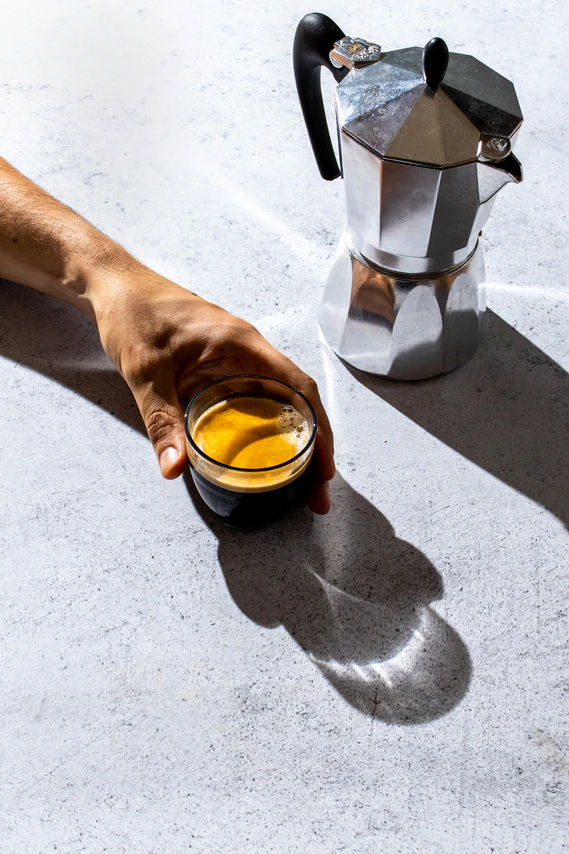What exactly do we mean when we talk about Moka?

Is it a city, coffee with chocolate or a kettle? Is all this together?
In the world of coffee, terminology is a common occurrence, and confusion with the specialized "glossary" of coffee is also common. Many times, the same word can mean more than one thing, confusing the tangle even more.
The word "Moka" is a typical example! What would a 19th-century sailor on a merchant ship, an ice cream maker, a barista and a 60s Italian hear the exact same word? Let's take a look back at the rich history of one of the most characteristic words of the coffee universe, the word "Mocha".
 The beginnings: an Arabic port on the Red Sea and a new word.
The beginnings: an Arabic port on the Red Sea and a new word.
The original meaning of the word Mocha goes deep back into the history of coffee in the Arabian Peninsula. Yemen was one of the first countries to cultivate coffee, and the Yemeni Sufi monks were perhaps the first people to brew coffee in a way similar to what we enjoy today.
The Arabs held the coffee monopoly for years, cultivating it in Yemen, but also importing large quantities from Ethiopia and Eritrea, on the opposite shore of the Red Sea, through caravans driven by Bedouins. Coffee is exported worldwide roasted from a Red Sea port, the port of al-Makha, better known to Westerners as Mocha.
Mocha began to flourish through the coffee trade, reaching its peak in the 16th century. The beginning of the colonial era breaks the coffee monopoly, while an epidemic strikes the city mercilessly in the 18th century, decimating its population. For years, however, the word Mocha was synonymous initially with coffee, and then with good, fine grains of exceptional quality.
Mocha means chocolate: The taste that defined the western world
For many decades, coffee beans from the Arabian Peninsula were sold to Europe and the New World as Mocha, while Asians from Java, from the Indonesian island of the same name, to at least the spread of coffee cultivation in the Caribbean, Latin America and the rest of Africa. Compared to Ethiopian or Asian beans, Yemeni beans had a more "chocolate" profile, with flavorful notes reminiscent of cocoa and chocolate. Mocha came to be called the finest coffee, with its chocolate flavor or aftertaste, while Java was called in America (and to a large extent, it is still called) any other coffee.
This is the beginning of the word Mocha as we know it today, which is identified with beverages that contain coffee and chocolate. Mocaccino, Mocha Latte, Caffe Mocha are the drinks that combine espresso with cocoa or chocolate, often with whipped cream or milk. It is indicative that there is no defined or standard recipe for a mocca, but dozens of different variations from country to country (and from coffee to coffee) with only the common presence of chocolate. The delicious memory of Yemen's fine coffee survives to this day, in hearty chocolate coffees, but also in ice cream parlors around the world, which serve coffee-flavored ice cream as "Moka".
Moka: the favorite kettle that is not missing from any Italian household.
In interwar Italy, an engineer named Luigi De Pont tries to find a coffee machine that is fast, practical and extracts coffee aromas to the maximum. A demonic businessman, Alfonso Bialetti, buys the patent, redesigns the machine using aluminum and bakelite, and names this new machine Moka, replacing the two "c" with "k", a letter not particularly used in the Italian alphabet, give a unique - and at the same time, known and familiar to all - name to his machine.
It was the beginning of an iconic coffee machine, the Moka Pot, that would win the hearts of Italians, who simply call it "the coffee machine", a sign of appreciation for their love for it. Its innovative design has given Moca a place in the world's largest museums (museums of design, industrial design, science and contemporary art) and almost a century later, it remains dominant not only in the hearts of coffee shop owners, but also in pop culture.
One word, three different interpretations, a journey through time and space of coffee: the best proof that our favorite drink is not "a cup of coffee" but a habit and a cultural good that shapes language, culture and society.







